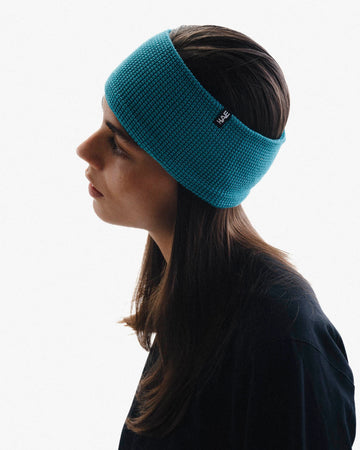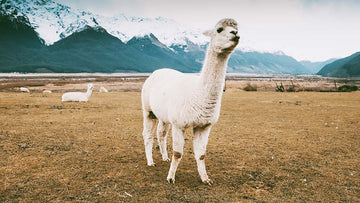Alpaca wool – a fiber that impresses not only with its softness but also with its special properties. In this article, you'll learn why our hats and headbands made from alpaca wool are something truly special and why these fibers are perfect for cold winter days and mild autumn or spring temperatures.
Why alpaca wool?
Alpacas are not only cute to look at, they also produce one of the highest quality and softest natural fibers available. Their wool possesses exceptional properties that make it ideal for year-round clothing. Similar to the wool of Merino sheep, alpaca wool offers numerous benefits:
- Extremely soft, fluffy and light
- Temperature and humidity regulating
- Hardly absorbs odors
- Durable and wrinkle-free
- Natural shine and high quality
Alpaca wool is particularly fine and soft, making it perfect for products worn directly against the skin. This is precisely why our alpaca wool headbands and hats are the perfect choice for fall and winter days.
The quality of alpaca wool
Alpaca wool is one of the softest and most luxurious natural fibers in the world. Baby alpaca wool, in particular, is known for its exceptional fineness. This is not the wool of young animals, but rather a special classification that refers to the fineness of the fibers. With a diameter of approximately 21 to 23 microns, baby alpaca is particularly soft and comfortable against the skin, making it ideal for headbands and hats that are worn directly.
Our baby alpaca headbands are light and airy—perfect for the transitional seasons of fall and spring. They offer an excellent balance of warmth and breathability. For winter, we've developed thicker hats made from the same fine alpaca wool, whose insulating properties will keep your ears warm even in freezing temperatures. The exceptional comfort of this wool lies in its exceptional softness, making it suitable even for sensitive skin.
Properties and care
Alpaca wool is known not only for its softness and warmth, but also for its easy care. Because it's naturally odorless, alpaca wool hardly absorbs odors. This means you don't need to wash your hat or headband after every wear—it's often enough to simply air it out in the fresh air. Airing helps remove odors and wrinkles while preserving the wool's natural structure.
If washing is still necessary, we recommend a gentle hand wash with lukewarm water and a pH-neutral wool detergent. Avoid vigorous rubbing or wringing to protect the fibers. Instead, gently agitate the garment in the water. To protect the wool fibers, add a splash of vinegar to the water during the final rinse cycle—this neutralizes any detergent residue and helps keep the fibers soft.
After washing
After washing, the alpaca wool should be gently squeezed without wringing. Place the hat or headband between two towels and gently squeeze to remove excess water. To dry, lay the item flat on a towel and gently stretch it back into its original shape. Avoid direct sunlight or heat sources such as radiators, as this can dry out the fibers.
Caution is also advised when storing the items. Alpaca wool attracts clothes moths, so it's recommended to store the items with cedarwood or lavender sachets—the natural scent will keep these unwanted guests away.
The most important care tips at a glance:
- Air regularly instead of washing to maintain freshness.
- Gently hand wash with lukewarm water and pH-neutral detergent.
- When rinsing, add a splash of vinegar to protect the fibers.
- Squeeze out gently , without wringing, and dry between towels.
- Dry flat , do not hang, and avoid direct sunlight.
- Prevent moths with cedarwood or lavender sachets in the wardrobe.
With this simple care, your alpaca wool will retain its soft, fluffy texture and remain a faithful companion through cold and mild days.












